Physical exercises for older people to improve wellbeing
Exercise is extremely beneficial to your wellbeing; as we get older we tend to benefit more from exercise.
A small amount of physical exercise or engagement in physical activities daily can significantly improve energy levels and improve your mood.
Greater amounts of physical activity can provide additional benefits: this can be done by improve the intensity of the exercises, the duration of the exercises, or the frequency.
Ideally you would engage in some form of physical exercise every day for at least 15 minutes. This pamphlet will introduce you to simple exercises that can prepare you to tackle more intense physical activities in the future.
Getting started
Start slowly; there’s a good chance tension has been building in you for years, so the problem won’t be fixed in a day.
Drink plenty of water unless your doctor has advised against this
Never hold your breath during an exercise; you should always be breathing in or out
Stretching should NOT cause any pain or serious fatigue. You may feel some discomfort that goes away when tension is released, but there should be no pain.
Always be aware of the position of your spine. Do not arch it too much. Remember, you should not feel any pain during the exercises, and if you feel uncomfortable while you’re doing the exercise it may be a good idea to stop.
Always consult your doctor before engaging in any new physical activity, especially if it has been a long time since you’ve engaged in physical activity
Lay down on your side, keeping your upper body as relaxed as possible.
Slowly raise your leg until you can’t raise it any higher, and slowly bring it down.
Do 10 of these, take a 2-3 minute break then turn to the other side and repeat with the opposite leg.
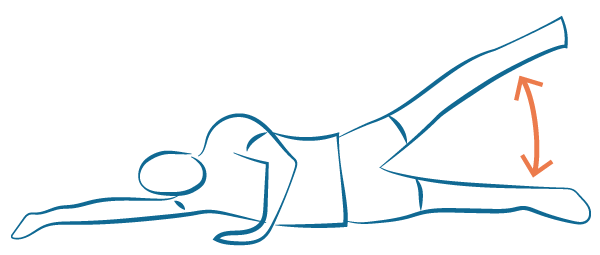
Reminder: you do not need to raise your leg as high as the image below. At no point should you feel pain or discomfort
Begin by standing straight; if this might be an issue you can stand against a wall with your arms along your side
Take a deep breath in through your nose, and slowly raise your chest. Your body should naturally arch – you should raise your chest until your each the point where you cannot raise it any more
Hold this position briefly and slowly breathe out through your mouth, slowly bringing your chest back down – you should be standing straight now.
Perform this as many times as you’d like
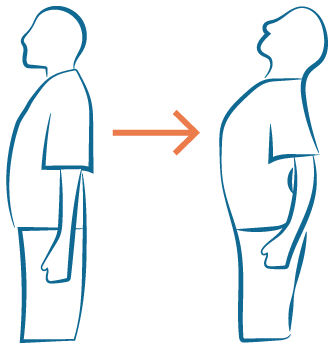
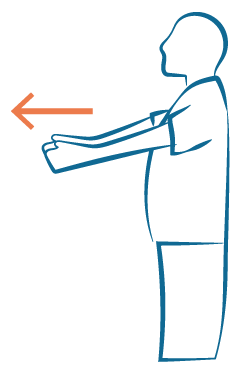
Bring your arms forward and then clasp your hands ensuring that your palms are facing the ground
Slowly raise your arms to about chest height and gently push your palms away from your body. You should feel a stretch in your neck, upper back and shoulder.
Hold this position for 5 seconds to start off. Release the stretch and repeat until satisfied.
Over time you should increase the time you hold this position, up to 60 seconds for maximum benefit. This may take several months to a year. Be patient and start slow.
Reminder: If you feel any discomfort, you may be pushing your palms away with too much force; be gentler.
Neck Rotations help restore mobility and flexibility in your neck; as we get older we tend build more tension in our necks without releasing this tension. This exercise can be performed any time you’re sitting.

Sit straight and look ahead
Slowly turn your head towards your left shoulder as far as you can while still being comfortable. Hold this for a 5 seconds and slowly return to the starting position
Repeat action again, this time looking right instead of left.
This should be repeated 3 times on each side
Hip Marches will improve flexibility and release tension in the hips and thighs. Refer to the image below as a reference
Start by sitting upright on a chair, but do not lean back on the back of the chair.
While keeping your knee bent, raise one leg up as far as is comfortable. And then slowly bring it down.
This should be repeated 5 times on each leg
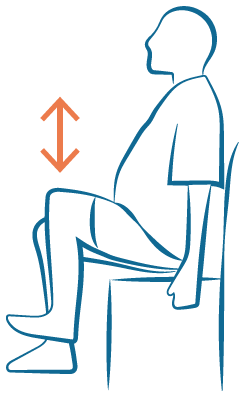
Ankle Stretches will improve flexibility and release tension in ankle and calves. It will also reduce the risk of blood clots. Refer to the image below as a reference
Sit upright and hold on to the sides of the chair with each arm
Straighten one leg in front of you, lifting your foot off the floor.
With the raised leg, point your toes away from you and then flex yout toes towards you. Then lower your leg back to the floor.
Do this 3 times for each leg
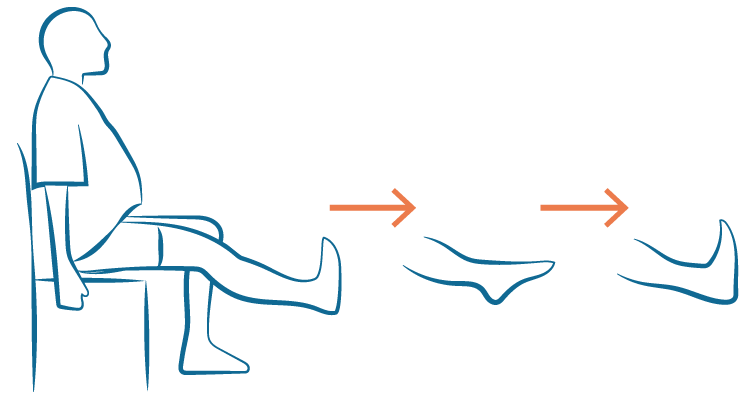
Reminder: Hold onto the sides of the chair for extra support.
Disclaimer
This information is for educational purposes. As neither brochures nor websites can diagnose people it is always important to obtain professional advice and/or help when needed.
This information may be reproduced with an acknowledgement to WayAhead – Mental Health Association.
The Association encourages feedback and welcomes comments about the information provided.
5 Ways to Wellbeing
These are five simple and effective ways to improve your psychological and emotional health that are based on extensive international research
Stress Less Tips
The tips are based on health evidence and research, and developed in consultation with target groups and other organisations.
Newsletter
Stay up to date
Sign up to our Mind Reader newsletter for monthly mental health news, information and updates.